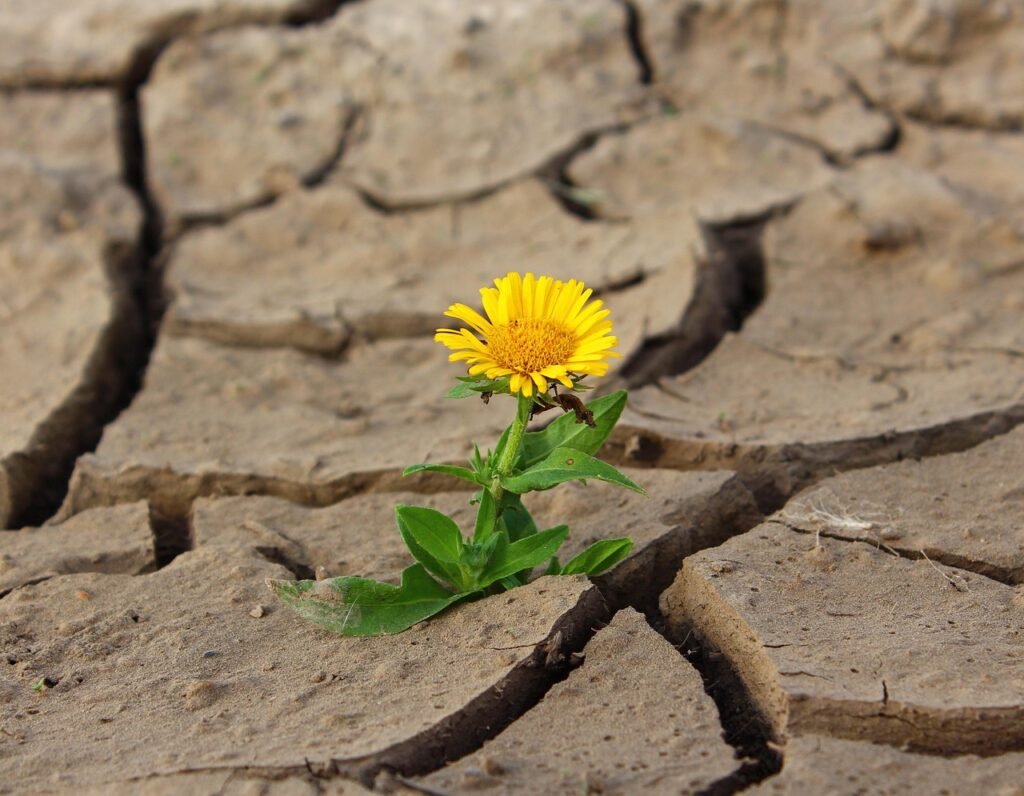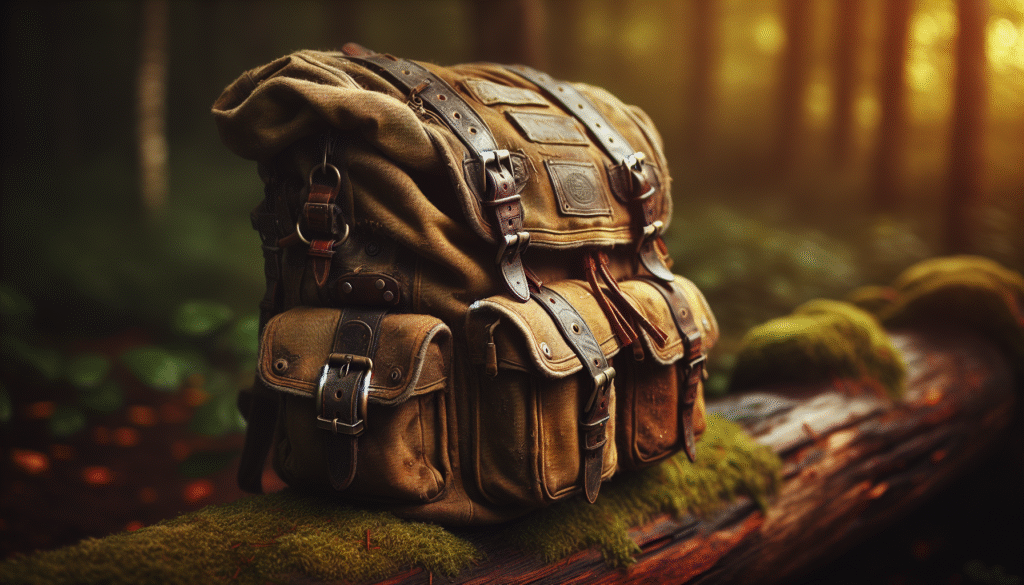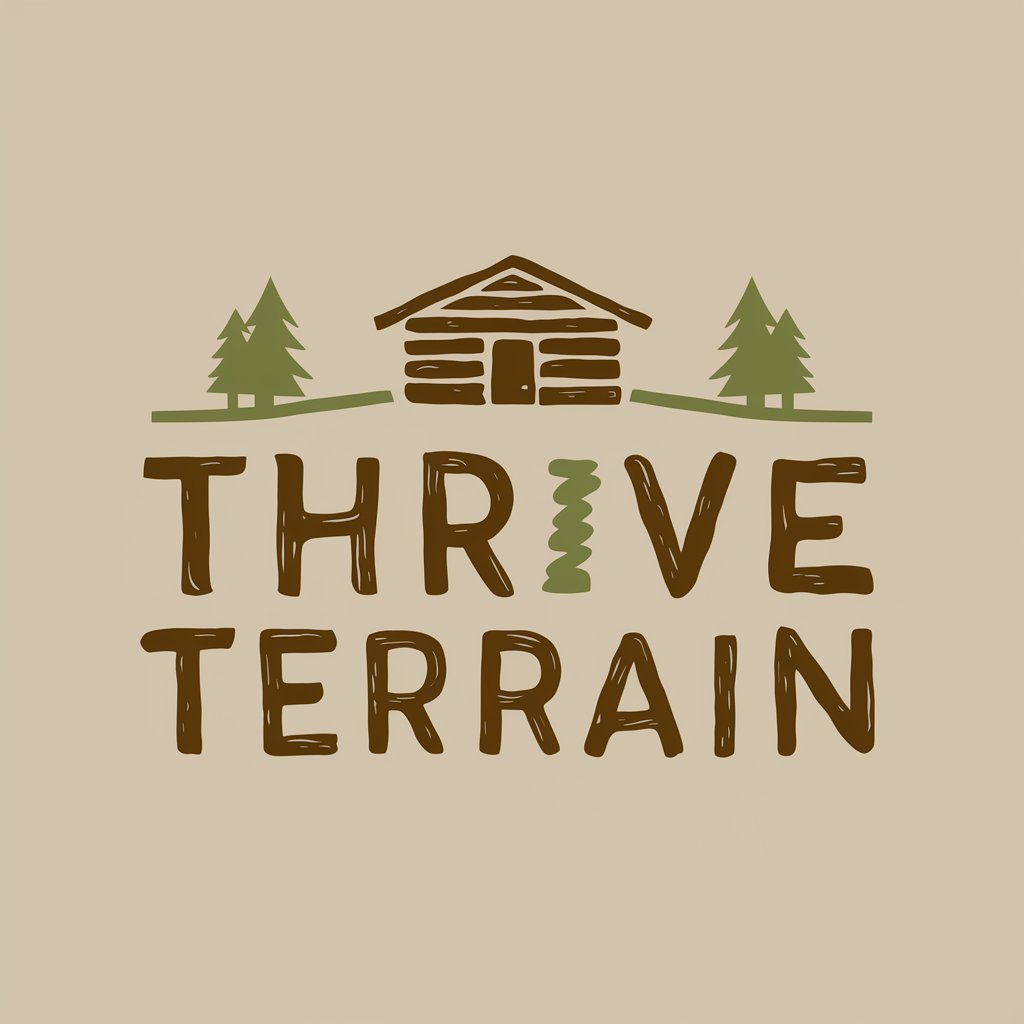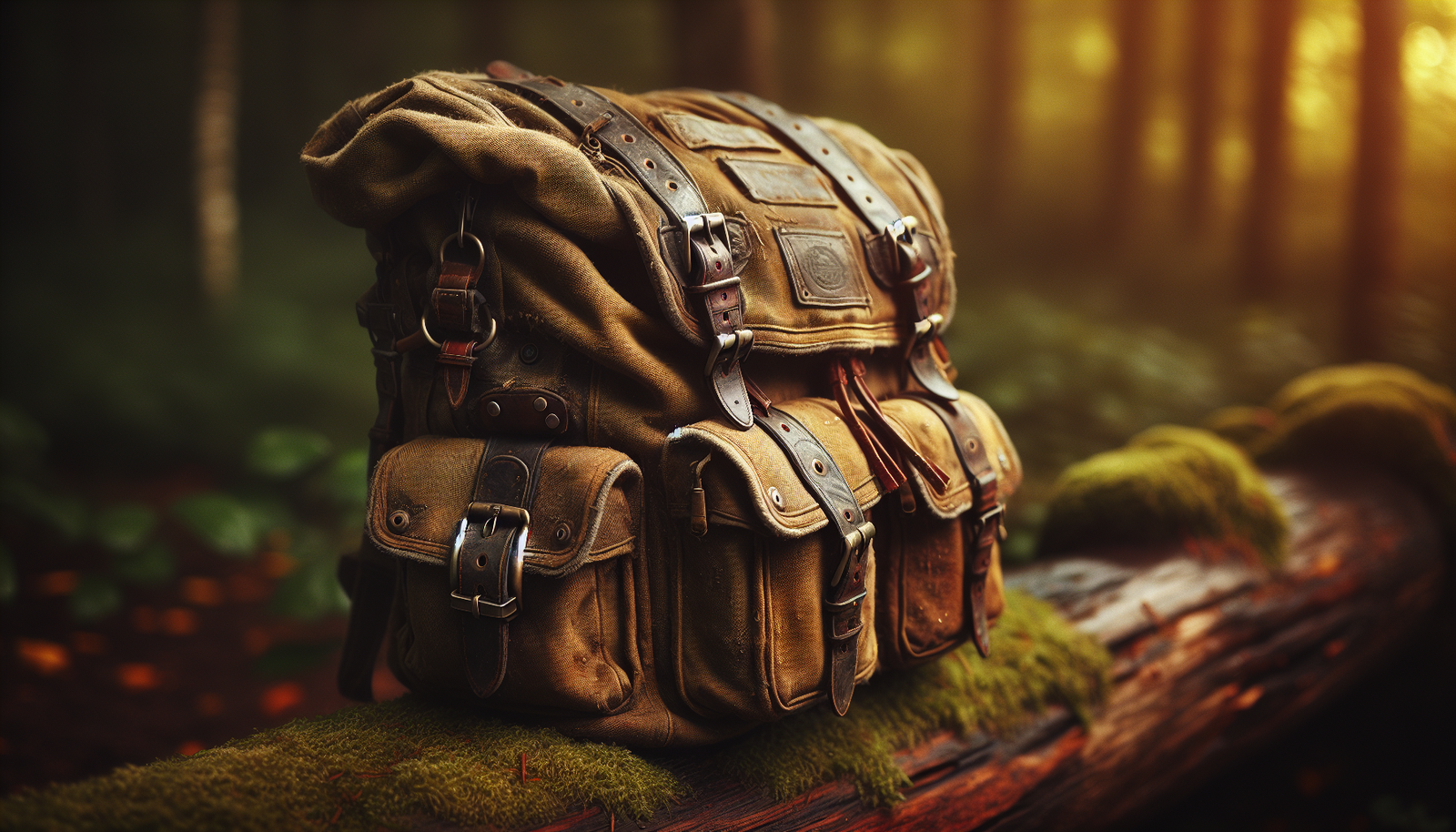Could you gather the gear and skills to comfortably survive 30 days off the grid?

What Gear Do You Need To Survive 30 Days Off The Grid?
This article breaks down the gear, consumables, and planning you’ll need to spend a full month living independently from public utilities. You’ll get practical lists, quantities, and reasoning so you can make informed decisions and tailor your kit to your environment.
Start with planning and mindset
Preparation is as important as equipment, and your mindset will determine how you use what you bring. Commit to simplicity, prioritize multi-use items, and accept that redundancy (backups) increases your chance of success without adding unnecessary weight.
Assess your environment and constraints
You should decide whether you’ll be in desert, mountain, coastal, or temperate forest terrain because gear needs change with climate and terrain. Consider local hazards, average temperatures, precipitation, and daylight hours when packing and planning.
Health, skill level, and team size
Think about your physical fitness, medical conditions, and whether you’re going alone or with others. Your team size affects consumable quantities, shelter options, and the scale of systems like water storage and cooking.
Shelter and sleeping
Your shelter is your base of operations, protection from weather, insects, and wildlife, and a place to rest so you can think clearly. A good shelter system balances weight, durability, and comfort.
Tents, tarps, and shelters
Choose a shelter suited to your environment and group size; a lightweight 2-person tent works well for most solo or pair scenarios, while tarps provide versatility and lower weight. Make sure your shelter has good ventilation, a bug net if insects are a concern, and durable materials for repeated use.
Sleeping systems and insulation
Your sleeping bag and sleeping pad determine how rested you’ll be, which affects morale and performance. Select a bag rated several degrees colder than the lowest expected night temperature and use an insulated pad to prevent heat loss to the ground.
Site selection and setup
You should pick a site that offers natural protection, flat ground, and distance from potential hazards like flood zones or deadfall trees. Orient your tent for prevailing wind, and create a small compound for cooking and waste that’s downwind and separated from sleeping areas.
Water — collection, storage, and purification
Water is the most critical consumable; you can only survive a few days without it under most conditions. Plan for secure collection, adequate storage, and reliable purification methods.
Daily water requirements and planning
You should plan for at least 2–4 liters per person per day for drinking plus extra for cooking and hygiene depending on climate and activity. In hot, active, or dry conditions, increase that to 4–6 liters or more.
| Use | Recommended Daily Amount per Person |
|---|---|
| Drinking | 2–4 L |
| Cooking | 0.5–1 L |
| Hygiene (minimal) | 0.5–1 L |
| Total conservative | 3–6 L |
| Higher activity/heat | 6–10 L |
Filtration and purification options
You should carry at least two methods of water treatment: a mechanical filter and a chemical or UV backup. Filters remove particulates and many pathogens, chemicals like chlorine dioxide handle viruses and provide lightweight backup, and UV pens offer fast pathogen destruction when water is clear.
Storage and transportation
Bring collapsible water bladders or rigid containers so you can haul and store sufficient amounts when you find a reliable source. Consider container volume, durability (bite- and puncture-resistant), and how easy it is to clean between uses.

Food and cooking
Calorie density, shelf life, and ease of preparation are your top priorities for a 30-day food plan. You’ll want foods that are non-perishable, require minimal fuel or water to prepare, and provide a balance of carbs, fats, and protein.
Food types and rationing
You should focus on preserved items: dehydrated meals, freeze-dried options, canned goods, nut butters, rice, pasta, oats, and legumes. Plan caloric intake at 2,000–3,000+ kcal/day depending on activity; maintain higher calories for heavy labor or cold environments.
Cooking gear and stoves
Choose a stove system that matches your fuel availability: canister stoves are compact and easy, liquid fuel stoves are versatile in cold climates, and wood stoves eliminate fuel resupply but require firewood and more skill. Include a small pot, a lightweight pan, utensils, and a reliable lighter and backup ferro rod.
Fuel and cookware planning
Bring enough stove fuel for your planned meals and an emergency reserve. If you rely on solid fuel or wood, consider a small rocket stove to improve efficiency. Your cookware should nest to save space and include a pot with a lid for boiling and sterilizing water.
Power and lighting
You’ll need power for lights, charging communication devices, and possibly powering small appliances. Your power plan should provide basic needs with redundancy.
Solar, batteries, and power banks
You should invest in a portable solar panel paired with a battery bank (power station) that matches your expected loads. Smaller solar chargers and USB power banks are useful for phones and GPS units, while larger lithium power stations can run lights, small fridges, and medical devices.
Lighting options
Carry a headlamp as your primary hands-free light and supplement with compact LED lanterns for camp tasks. Bring spare batteries and consider low-power lighting like chemical light sticks as an additional backup.
Power budgeting
Make a list of devices you’ll use daily and estimate watt-hours. Prioritize charging radios, phones, medical devices, and GPS; reduce load by using devices sparingly and disabling nonessential features.

Tools and repair kits
A small tool collection makes gear repair practical and keeps your systems running. Focus on tools that are versatile and compact.
Cutting, cutting-edge, and multi-tools
You should carry a fixed-blade knife for heavy tasks and a folding knife or multi-tool for precision work. Keep your knives sharp and protected to avoid accidents.
Cordage, fasteners, and repair materials
Bring paracord, duct tape, a sewing kit, spare cord locks, and zip ties. These items let you rig shelters, repair clothing, and improvise fixes for gear failures.
Fire kit and maintenance tools
A ferrocerium rod, multiple lighters, waterproof matches, and tinder material should be part of your fire-starting kit. Also carry a small set of hand tools: multitool pliers, a compact hatchet or folding saw for wood processing, and a wrench or screwdriver set for gear maintenance.
Navigation and communication
Even if you plan to stay in one place, navigation and communication gear keep you safe and connected for emergencies.
Maps, compass, and GPS
You should have a physical topographic map and a reliable compass; GPS units and smartphone apps are useful but should be considered secondary due to battery dependency. Learn navigation basics so you can traverse if technology fails.
Emergency communication and signaling
Bring a personal locator beacon (PLB) or satellite messenger if you’ll be far from cell service, and carry a whistle and signal mirror for local signaling. Two-way radios are useful for groups and short-range communication.

Medical and hygiene
Your health determines your survival capacity, and a properly equipped and organized medical kit can prevent small issues from becoming life-threatening.
First aid kit essentials
Stock dressings, bandages, antiseptics, blister treatment, pain relievers, antibiotics if trained and authorized (or prescriptions for known conditions), suture alternatives if you’re trained, and a tourniquet. Tailor meds to allergies and chronic conditions.
Hygiene, sanitation, and waste management
Bring biodegradable soap, a small trowel for cat-holes if permitted, hand sanitizer, menstrual supplies, and enzyme-based waste bags for situations where burying isn’t feasible. Sanitation reduces disease risk and protects water sources.
Clothing and personal protective gear
Your clothing system should keep you comfortable, dry, and safe throughout varying temperatures and weather.
Layering, fabrics, and insulation
You’ll use a three-layer system: moisture-wicking base layer, insulating mid-layer (fleece or puffy jacket), and weatherproof outer shell. Choose fabrics that dry quickly and resist odor for extended use.
Footwear and socks
Quality boots suited to terrain are essential; break them in before your trip to prevent blisters. Bring multiple pairs of socks and a small repair kit for footwear issues.
Rain and cold protection
Pack a breathable rain jacket and rain pants and an extra insulating layer for nights. Consider a lightweight balaclava, gloves, and the ability to add or remove layers as activity and temperature change.
Fire starting and warmth
Keeping warm and being able to cook and boil water is fundamental. Fire systems should be reliable, safe, and appropriate to your location.
Fire sources and fire safety
You should carry multiple ignition sources and fuel supplies; practice building contained fires and adhere to local fire regulations to prevent wildfires. Use fire pans or designated fire rings where required.
Heat sources and emergency shelters
Pack an emergency bivvy or reflective blanket for unexpected exposure, and consider a small, efficient wood stove if you’ll be staying stationary for weeks and need warmth with lower smoke and fuel consumption.
Security, wildlife, and safety
Your safety plan includes protection from wildlife and situational risks. Preventive measures minimize the chance of confrontation or injury.
Wildlife considerations
Store food securely—use bear cans or hang systems where appropriate—and keep cooking areas separate from sleeping areas. Learn local wildlife behavior and avoid attracting animals with scented items.
Personal safety and boundary setting
You should maintain situational awareness and establish simple defenses like noise makers or secure perimeters rather than relying solely on weapons. If you carry firearms, ensure you are trained, know local laws, and secure them properly.
Waste management and environmental responsibility
Living off-grid responsibly means leaving as little trace as possible and managing human and food waste safely.
Human waste and greywater
When allowed, bury human waste at least 6–8 inches deep and 200 feet from water sources; when not permitted, use pack-out systems. Dispose of greywater on permeable ground spread over a wide area away from campsites.
Trash and recycling
You should pack out all non-biodegradable waste and minimize packaging at home before you go. Use resealable bags and compact trash containers to reduce smell and weight.
Morale, mental health, and entertainment
Your mental state affects decision-making and resilience. Plan ways to keep morale high and combat isolation.
Entertainment and morale boosters
Bring a few low-weight items: a book, a deck of cards, a journal, or simple portable games. Routine, small comforts like favorite snacks and a reliable hot beverage routine go a long way toward maintaining spirits.
Social and routine strategies
If you’re alone, schedule regular tasks, exercise, and check-ins with family or a designated contact. Keeping a predictable routine helps reduce stress and maintain physical health.
Sample gear lists and packing tables
Below are tables showing essential gear, optional items, and a rough weight estimate to help you plan. You can adjust quantities and selections to match your environment and personal preferences.
Essential gear list (one person)
| Category | Item | Notes |
|---|---|---|
| Shelter | 1-2 person tent or hammock + bug net | Waterproof floor or tarp |
| Sleeping | Sleeping bag (seasonal), insulated pad | Bag rated below expected temps |
| Water | 2–6 L/day planning, filter, chemical tablets | Collapsible 10–20 L storage |
| Cooking | Lightweight stove, pot, lighter, utensils | Fuel for 30 days + reserve |
| Food | 30-day supply (calories) | Mix of freeze-dried, canned, staples |
| Power | Solar panel + battery bank or power station | 20–100Wh/day estimate |
| Lighting | Headlamp, lantern, spare batteries | Primary + backup |
| Tools | Fixed knife, multi-tool, folding saw/hatchet | Sharpener and repair kit |
| Navigation | Map, compass, GPS/phone w/solar charger | PLB/satellite messenger |
| Medical | Comprehensive first aid kit | Include meds for chronic conditions |
| Clothing | Layered system, spare socks, rain gear | Proper footwear |
| Fire | Ferro rod, lighter, tinder, stove fuel | Redundancy matters |
| Hygiene | Soap, toothbrush, small towel, trowel | Sanitation supplies |
Optional but highly recommended
| Item | Why it helps |
|---|---|
| Portable solar shower | Comfort and hygiene |
| Compact wood stove | Efficient heat and cooking fuel independence |
| Small solar fridge | Keeps medicines and some foods fresh |
| Fishing kit or trapping supplies | Supplement food sources |
| Extra batteries and fuses | For redundancy |
| Sewing kit with repair patches | Keeps clothing and gear serviceable |
Example weight budget (rough)
| Category | Estimated weight (lbs) |
|---|---|
| Shelter & sleeping | 6–10 |
| Water (initial) | 10–40 (depending on source availability) |
| Food (30 days) | 15–35 |
| Cooking & fuel | 5–10 |
| Power & electronics | 3–15 |
| Tools & repair | 3–8 |
| Clothing & footwear | 5–10 |
| Misc (medical, hygiene, comms) | 3–8 |
| Total typical | 50–136+ |
Note: Water weight scales quickly; plan to source and treat water locally to reduce pack weight whenever possible.
Consumables calculator and examples
This short table helps you estimate how much food and water to store based on activity level.
| Activity level | Daily kcal per person | Daily water (L) |
|---|---|---|
| Low activity, temperate | 1,800–2,200 | 2–3 |
| Moderate activity, varied climate | 2,200–2,800 | 3–5 |
| High activity or hot climate | 2,800–4,000+ | 5–10+ |
Multiply calories by days and add a 10–20% emergency surplus. For water, identify local sources to reduce carried volume; always carry at least 24–48 hours of water if you expect to travel to a source.
Training, practice, and maintenance
Equipment alone won’t guarantee success; training and regular practice are vital. You should regularly rehearse building shelters, purifying water, cooking on your stove, and administering first aid before you commit to 30 days.
Skills to practice before you go
Practice firecraft, water treatment, navigation, basic mechanical repairs, first aid, and emergency signaling. Train to maintain your gear (sharpening, seam repair, cleaning filters) because small failures compound over time.
Maintenance schedule and spares
Bring spare parts for critical items like filters, stove jets, and batteries, and schedule routine checks every few days to find and fix issues before they become problems. Keep a small log of consumable usage and resupply points if you plan to restock.
Budgeting and buying tips
You don’t need the most expensive gear, but spend on items that will fail you if cheap: shelter, sleeping system, and water treatment. Balance cost against reliability and weight.
New vs used and prioritizing purchases
Buy new for items where failure could be life-threatening (sleeping bag, filter). Consider used for hard cases, packs, and tools if you inspect them carefully. Prioritize shelter, water, and medical gear first.
Long-term investment and modularity
Choose systems that can be scaled—solar panels that connect to multiple chargers, pots that nest, and modular repair kits. This flexibility reduces the need to carry different tools for every situation.
Final checklist and actionable next steps
This short checklist helps you get started and prevents common oversights. You should check items off before committing to a 30-day off-grid stay.
- Confirm climate and terrain-specific gear.
- Assemble essentials: shelter, water treatment, food, stove, medical kit.
- Pack redundancy for critical systems: water, ignition, shelter.
- Practice with all gear in shorter stays (weekend shakedown).
- Create an emergency communication plan and leave it with someone you trust.
- Plan resupply or extraction points and timing if you’ll need them.
Closing thoughts
Surviving 30 days off the grid is as much about planning and skill as it is about gear. You should aim for redundancy on life-critical systems, lightweight and durable solutions, and regular practice. Start with the essentials—shelter, water, food, and medical—and expand with power, tools, and comforts as your budget and needs allow. With practical gear choices, sound planning, and the right mindset, you’ll be well-prepared to spend a month living independently and safely.

